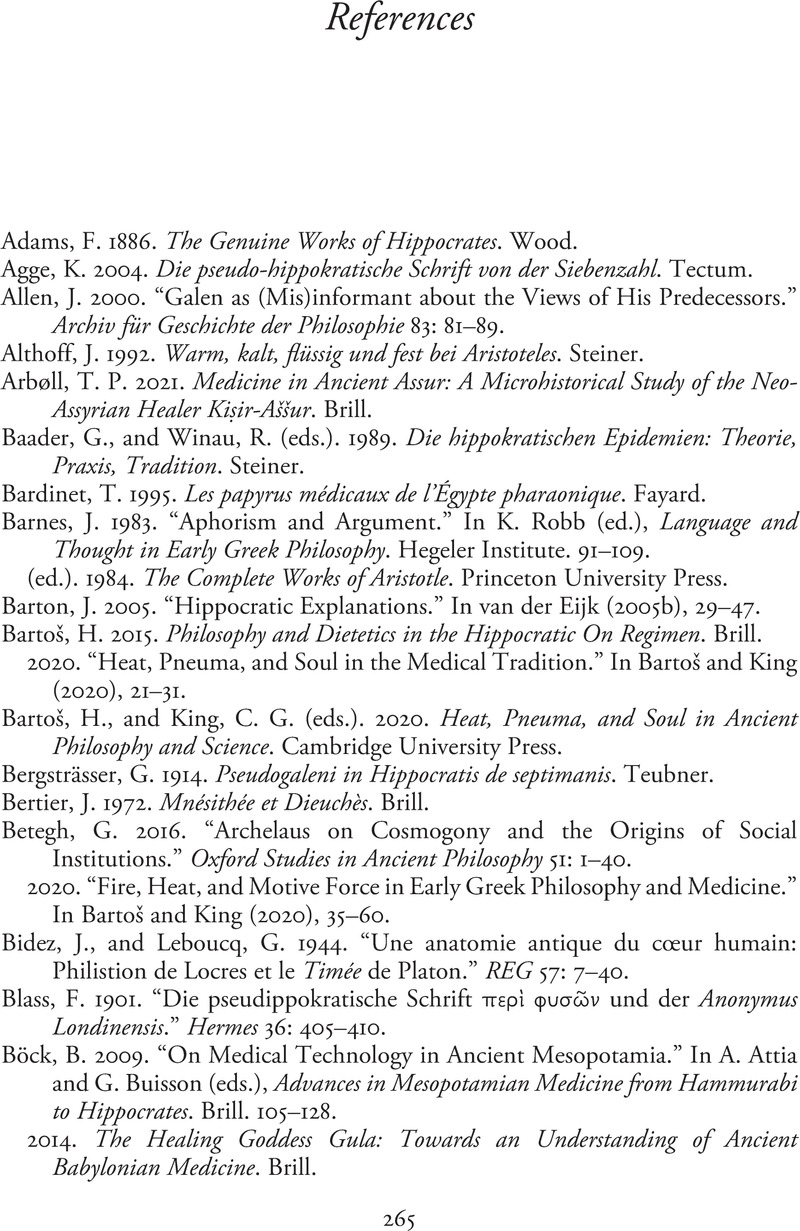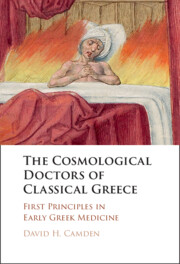Book contents
- The Cosmological Doctors of Classical Greece
- The Cosmological Doctors of Classical Greece
- Copyright page
- Dedication
- Contents
- Acknowledgments
- Citations and Abbreviations
- Introduction
- Chapter 1 Three Secondhand Reports
- Chapter 2 On the Nature of the Human Being
- Chapter 3 On Breaths
- Chapter 4 The Cosmological Impulse
- Chapter 5 On Flesh
- Chapter 6 On Regimen
- Conclusion
- References
- Index of Passages Discussed
- General Index
- References
References
Published online by Cambridge University Press: 27 April 2023
- The Cosmological Doctors of Classical Greece
- The Cosmological Doctors of Classical Greece
- Copyright page
- Dedication
- Contents
- Acknowledgments
- Citations and Abbreviations
- Introduction
- Chapter 1 Three Secondhand Reports
- Chapter 2 On the Nature of the Human Being
- Chapter 3 On Breaths
- Chapter 4 The Cosmological Impulse
- Chapter 5 On Flesh
- Chapter 6 On Regimen
- Conclusion
- References
- Index of Passages Discussed
- General Index
- References
Summary

- Type
- Chapter
- Information
- The Cosmological Doctors of Classical GreeceFirst Principles in Early Greek Medicine, pp. 265 - 281Publisher: Cambridge University PressPrint publication year: 2023



